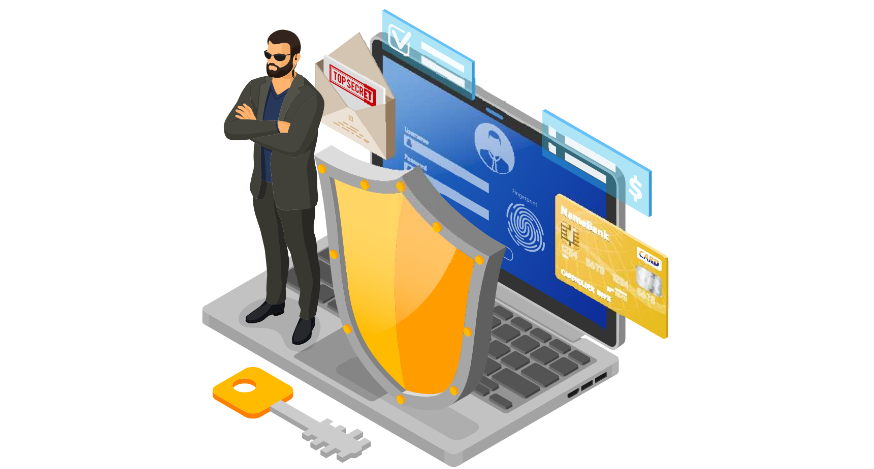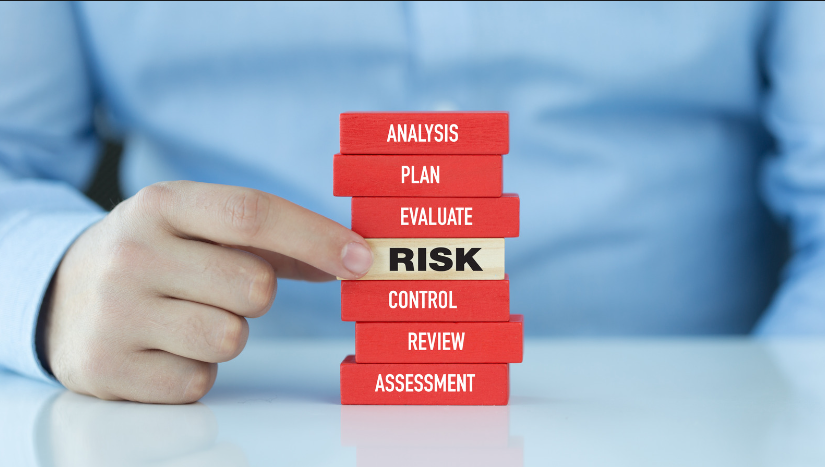In today’s world, where cyber attacks and security threats are becoming more complex, Security Operations Centers (SOCs) are the main defence for organisations to protect their online information. As we move into 2024, it’s important to understand how these SOCs are changing and what we can expect from them. This change isn’t just about using new tools or technologies; it’s about a big shift in how these centres operate and fight against cyber threats.
SOCs have come a long way since the early days when their main job was to look for problems and act when they happened. They now use cutting edge tech like AI (artificial intelligence), automation, and data analysis to stop strikes before they happen. As things change, it becomes harder to keep information safe, which is why SOCs need to keep getting better.

When we look ahead, we can see that a number of important things will shape the future of SOCs in 2024. This means that businesses need to keep up with changes and get their SOCs ready to protect against online threats even better.
Introduction
Security Operations Centers (SOCs) are like the watchtowers for the digital world of organisations, always on the lookout for cyber threats and attacks. They are really important because they help keep all of the data and systems that businesses use online safe so they can work and serve their customers. SOCs have had to change a lot over the years to keep up with cyberattacks that are better and more complicated. They used to only watch for problems and respond to them, but now, thanks to new technologies like AI and automation, they can see threats coming and stop them before they happen.
As we approach 2024, the evolution of Security Operations Centers (SOCs) is marked by several key advancements and shifts in strategy. Here’s how SOCs have evolved:
- Integration of Advanced AI and Machine Learning: SOCs now use more sophisticated artificial intelligence (AI) and machine learning algorithms to predict and identify potential threats faster than ever before.
- Increased Use of Automation: Manual Tasks, such as analysing logs and responding to alerts, are increasingly automated. This allows for quicker responses and reduces the chance of human error.
- Proactive Threat Hunting: Instead of waiting for alerts, SOCs are now actively searching for potential threats. This proactive approach helps in identifying and mitigating risks before they turn into actual breaches.
- Emphasis on Cyber Resilience: SOCs are focusing not just on preventing attacks but also on ensuring that an organisation can continue its operations during and after an attack. This includes strategies for rapid recovery and minimising damage.
- Greater Collaboration and Information Sharing: There’s a stronger emphasis on sharing threat intelligence among organisations, industries, and even with government entities. This collaborative approach enhances the ability to detect and respond to new threats.
Why is SOC Necessary?
- Guardians of Online Safety: SOCs act as the first line of defence against cyber threats, protecting our digital lives.
- 24/7 Watch: They monitor networks all day and night, looking for any signs of trouble to keep things safe.
- Quick Response: When a cyber threat is detected, SOCs respond fast to stop it and keep damage to a minimum.
- Keep Data Safe: They protect important information from being stolen or damaged by hackers.
- Stay Ahead of Threats: SOCs use the latest technology to predict and prevent attacks before they happen.
- Educate and Train: They also help educate employees about cybersecurity, making the whole organisation safer.
Top Trends of SOCs in 2024
1. Shift to Managed Detection and Response (MDR)
The move toward Managed Detection and Response (MDR) is like hiring a group of skilled cyber bodyguards to watch over your business’s online space. Firms are using specialised services instead of trying to handle all the complicated and always-changing online threats on their own. These services have the right people and tools to watch over the business’s networks and systems 24 hours a day, 7 days a week. They look for any signs of trouble and act quickly if they see something fishy.

Key Features of the Strategy
- Expert Monitoring: MDR provides companies with a team of cybersecurity experts who watch over their digital environments 24/7, ready to detect any unusual activity.
- Advanced Tools: These services use sophisticated technology to spot threats early, often before they can do any harm.
- Quick Response: If a threat is detected, the MDR team can take immediate action to address the issue, minimising damage.
- Continuous Updates: As new types of cyber threats emerge, MDR services update their tactics and tools to stay ahead, ensuring the company’s defences are always strong.
2. Rise of Security Orchestration, Automation, and Response (SOAR): Explanation
The growing use of Security Orchestration, Automation, and Response (SOAR) is like setting up a smart, automatic network security system for a SOC. When there’s a break-in (or cyberattack), this system does more than just sound a warning. It also figures out how to stop the thieves in their tracks and does it automatically. SOAR tools help businesses deal with cyber threats much more quickly by using a set of fixed rules to handle common types of attacks. This reduces time expenditure and decreases the likelihood of errors.

Key Features of the Strategy
- Automation: SOAR can automatically handle routine tasks and responses to threats, allowing security teams to focus on more complex issues.
- Orchestration: It coordinates different security tools and systems, making them work together seamlessly to respond to threats.
- Quick Decision Making: SOAR tools can analyse data from various sources and make fast decisions on how to deal with a threat.
- Customizable Playbooks: Companies can set up their own rules and procedures (playbooks) for responding to specific types of cyber threats.
3. Integration with SIEM, NDR, and EDR: Explanation
More and more companies are combining Network Detection and Response (NDR), Endpoint Detection and Response (EDR), and Security Information and Event Management (SIEM). This is like putting together a super team of security guards for their digital network. Each member of the team excels in a distinct area of expertise. SIEM is like the brain; it looks at data and finds possible risks. NDR keeps an eye on the company’s network data, looking for anything out of the ordinary that could point to an intruder. EDR, on the other hand, is watching the computers and other devices in the company and is ready to stop any bad software that tries to get in. These three things make the defence against cyberattacks much better when they work together.

Key Features of the Strategy
- Comprehensive Coverage: This integrated approach covers all aspects of an organisation’s digital environment, from network traffic to individual devices.
- Real-Time Detection and Response: By working together, SIEM, NDR, and EDR can detect and respond to threats in real-time, minimising potential damage.
- Deep Visibility: Organisations gain deep insight into their networks and devices, helping them understand and mitigate risks more effectively.
- Enhanced Incident Response: The combination of these tools improves the speed and effectiveness of the response to security incidents.
4. Embracing Automation and AI for Unknown Threat Detection: Explanation
Automation and artificial intelligence (AI) are being used more and more to find unknown risks at SOC. This is like adding a super-smart detective to the cybersecurity team. If this detective knows about some bad guys, it doesn’t just look for them. It’s also very good at spotting strange behaviour it hasn’t seen before, learning from it, and then being better at finding it next time. Companies that use AI can quickly find and deal with new cyber threats that haven’t been written about yet. This makes their online places much safer.

Key Features of the Strategy
- Advanced Detection: AI algorithms can analyse vast amounts of data to find patterns that suggest a new type of cyber attack is happening.
- Learning Over Time: The more data the AI system processes, the better it gets at recognizing what normal and suspicious activities look like, improving its ability to detect new threats.
- Speedy Response: Automation allows for immediate action to contain and mitigate threats as soon as they’re detected, often without needing human intervention.
- Adaptability: AI-driven systems can adapt to changing cyber threat landscapes, ensuring defences remain effective as new threats emerge.
5. Popularity of Managed SOC Services: Explanation
The trend toward managed Security Operations Center (SOC) services is like outsourcing your company’s cybersecurity to a team of experts. Many companies, especially small and medium-sized ones, find it hard to keep up with the complex world of cyber threats on their own. They might not have the money, tools, or skilled staff needed. Managed SOC services are like having a top-notch security team on call, but without the need for a huge investment. These services watch over the company’s digital activities 24/7, ready to spot and respond to any cyber threats.

Key Features of the Strategy
- 24/7 Monitoring and Response: Continuous oversight of the company’s networks, systems, and data to quickly identify and respond to threats.
- Access to Expertise: Benefit from the knowledge and experience of cybersecurity experts who are up-to-date with the latest threats and defence strategies.
- Cost Efficiency: Avoid the high costs associated with building and maintaining an in-house SOC. You can do so by paying a subscription fee for managed services.
- Advanced Technology: Managed SOC services use the latest security tools and technologies to protect the company. It often includes AI and automation for better threat detection and response.
6. Use of Vectra NDR for Real-time Alert Prioritisation: Explanation
The trend towards using Vectra Network Detection and Response (NDR) focuses on using advanced technology to immediately spot and prioritise threats in a company’s network. Think of it like having a highly intelligent security guard at SOC who not only notices when something suspicious is happening but also quickly decides which potential threats are the most dangerous and should be dealt with first. This is especially useful because companies often face a lot of alerts, and not all of them are serious. Vectra NDR helps by pointing out which alerts need immediate attention. It ensures that the most harmful threats are dealt with promptly.

Key Features of the Strategy
- AI-Driven Detection: Utilises artificial intelligence to analyse network traffic and identify suspicious behaviour more accurately.
- Prioritisation of Threats: Automatically ranks threats based on their severity, so the most critical issues are addressed first.
- Real-time Response: Capable of providing immediate actions to mitigate or contain threats as soon as they are detected.
- Visibility Across the Network: Offers a comprehensive view of all network activities. This makes it easier to spot and respond to anomalies.
Key Challenges Facing SOCs
Security Operations Centers (SOCs) are like the guardians of a company’s digital world, but even they face tough challenges. Here are some of the main obstacles they face:
- Keeping Up with Fast-Moving Threats: Cyber threats change and grow fast. It makes it hard for SOCs to stay ahead and keep everything safe.
- Handling a Flood of Alerts: SOCs often get more alerts than they can handle. It makes difficult to spot the real dangers.
- Skill Shortages: There aren’t enough trained cybersecurity professionals, making it hard for SOCs to have all the expertise they need.
- Adapting to New Technologies: As companies use new tech, SOCs must learn to protect these new environments, which can be tough.
- Budget Constraints: Often, SOCs don’t get enough money to get the best tools or hire more people, making their jobs even harder.

- Managing Remote Work Risks: With more people working from home, SOCs face extra challenges in keeping company information safe outside the office.
- Regulatory Compliance: SOCs must also make sure the company follows laws and regulations about data protection, which can be complex and time-consuming.
- Advanced Persistent Threats (APTs): These are sophisticated, long-term attacks by skilled hackers, and they’re very hard to detect and stop.
- Tool Overload: SOCs sometimes use too many different security tools, which can make things more confusing instead of more secure.
Best Practices for SOC Optimization
To keep SOC at the top of their game, integrating best practices with the right tools is crucial. Here are six key strategies along with tool suggestions to optimise SOC operations effectively:
- Prioritise Alerts with SIEM Tools: Utilise Security Information and Event Management (SIEM) systems like Splunk or LogRhythm. These tools help in sorting through countless alerts to focus on the most critical ones, streamlining threat detection and response.
- Automate Responses with SOAR: Implement Security Orchestration, Automation, and Response (SOAR) platforms. Use platforms such as Palo Alto Networks Cortex XSOAR or IBM Resilient. These automate routine tasks and orchestrate responses to common threats, allowing the SOC team to concentrate on complex challenges.
- Enhance Detection with EDR: Use Endpoint Detection and Response (EDR) tools like CrowdStrike Falcon or SentinelOne. EDR provides detailed insights into threat activities on endpoints, enabling proactive threat hunting and rapid response to incidents.

- Monitor Networks with NDR: Deploy Network Detection and Response (NDR) solutions like Darktrace or Vectra. NDR tools offer visibility into network traffic and behavior, identifying suspicious activities for early threat detection.
- Improve Visibility with Integrated Platforms: Opt for integrated security platforms that consolidate various security tools into one manageable solution. You can use tools such as Fortinet’s Security Fabric or Cisco SecureX, enhancing operational efficiency and threat visibility.
- Strengthen Defences with Vulnerability Management: Employ vulnerability management tools like Tenable Nessus or Qualys. These platforms scan and assess the network for vulnerabilities. It helps SOCs prioritise and address potential security weaknesses before they can be exploited.
Future Trends and Expectations
The future of SOCs is on the brink of a significant transformation, driven by the power of artificial intelligence (AI). Imagine SOCs operating like a highly intelligent, autonomous force, capable of identifying and neutralising cyber threats with unprecedented efficiency. However, this promising future isn’t without its hurdles. Ensuring these AI systems are foolproof and cannot be manipulated by cyber adversaries presents a formidable challenge.

In parallel, the spotlight on regulatory compliance and privacy has never been brighter. As digital privacy laws become more stringent, SOCs will need to navigate these regulations carefully, ensuring data protection is paramount. This focus on compliance is not just about adhering to laws. It’s about earning and maintaining the trust of individuals whose data is being protected.
Conclusion
As we move into 2024, SOCs are becoming smarter and stronger, ready to protect us online. By using new tech like AI and working together more, they’re setting up to fight cyber threats better than ever. Let’s get ready and support these changes to keep our digital world safe.
Click here, to learn more about cybersecurity trends of 2024.









